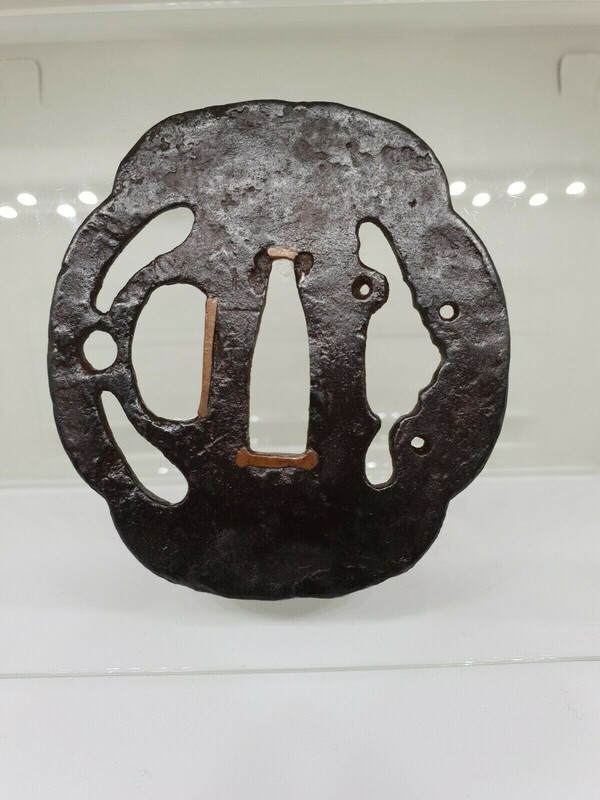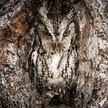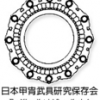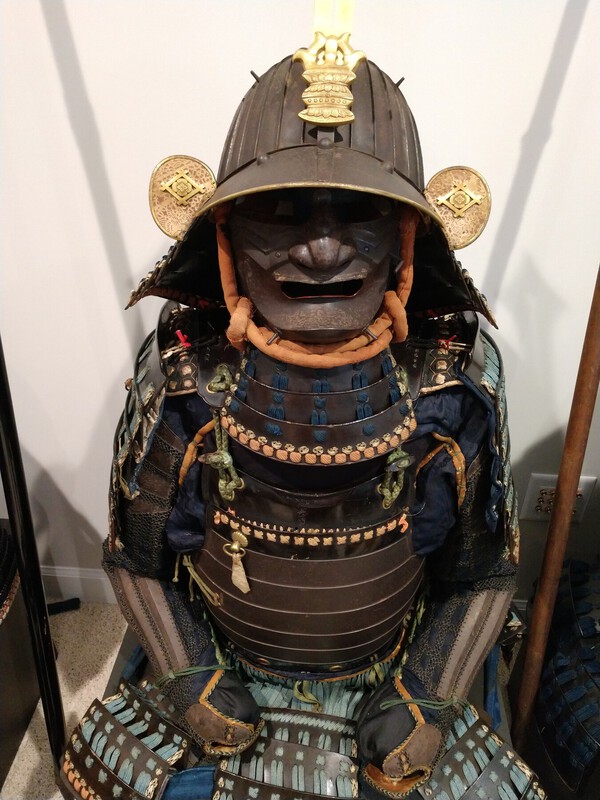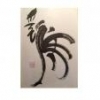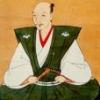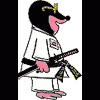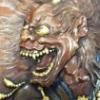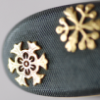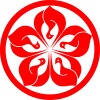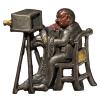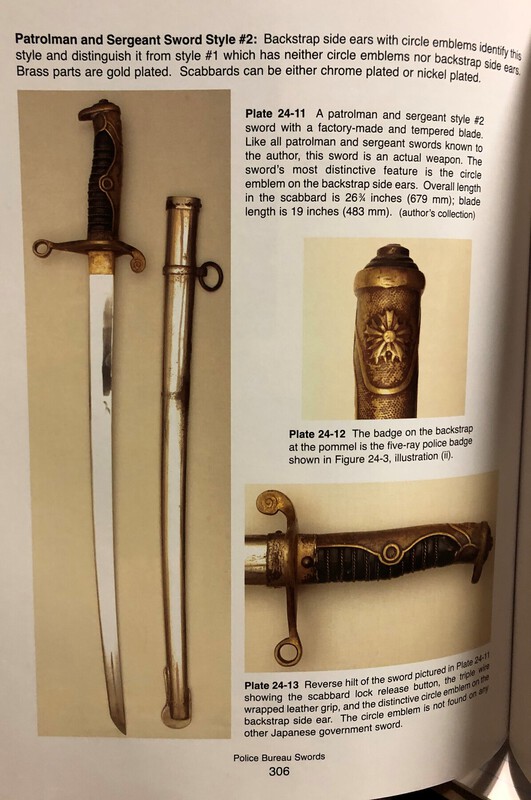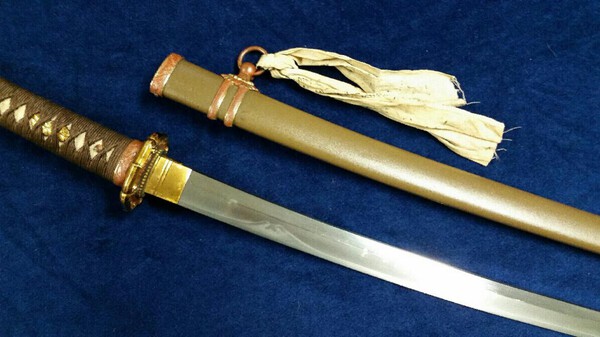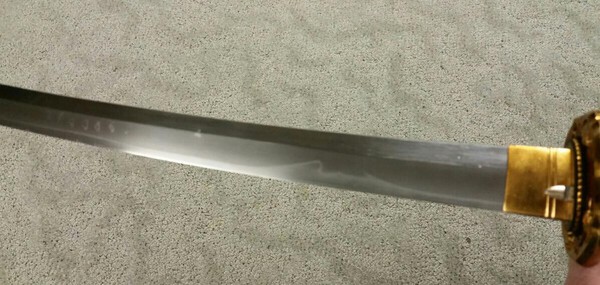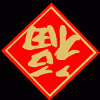Leaderboard
Popular Content
Showing content with the highest reputation on 10/23/2020 in Posts
-
6 points
-
From the information Mr. Singer supplied I have tried to research this sword smith and I believe this sword was made by Bushu Ju Terushige from Musashi province of the Shitahara school during the late Muromachi to early Edo period? Is this correct or am I way off base. Here are a couple of better photos of the sword. Thank you Mr. Singer for the translation4 points
-
Thought I'd share an interesting tsuba from my personal collection. By Hamano Shozui aka Masayuki(1696-1769), founder of the great Hamano School of sword fitting makers and pupil of the legendary Nara Toshinaga. Tokubetsu Hozon papers from 2014. Size: 75.8mm x 70.4mm. The omote side is an armillary sphere, an astronomical device for representing the great circles of the heavens(likely an import from Portugal to the Shogun while they were trading with Japan in 1605). It's carved with incredible skill of depth and perspective in Sukisagebori technique. The ura side is crashing waves among rocks. Both sides together I believe he is conveying a theme of time. The armillary sphere shows a movement of the sky while the ocean tides ebbs and flows weathering away the rocks. Shozui must have been inspired by 金家 (Kaneie) because this type of non-matching components on each side to express one hidden thing is definitely Kaneie’s style. Shozui signed his mei on either ura/back or omote/front of tsubas. Usually when he signed on the back it indicated that this Tsuba was ordered by a higher rank authority than Shozui. Another note is this is signed “穐峰斎”(Kihousai), a very rare signature among the numerous signatures Shozui signed with. I've only seen one other Shozui tsuba signed this way and it's a masterpiece by him.3 points
-
Depends whether you are looking at an ubu blade or one that is suriage. I don't think this is uncommon in ubu blades or those that may be slightly machi-okuri. The other possibility is that it originally exhibited yakiotoshi and the hamachi has been moved up slightly making it appear as in your illustration. If shortening and original yakiotoshi is is a possibility then according to Nagayama it could be indicative of an older blade, or one from Kyushu or it could be evidence of saiha. Hope this may help point you at where to look3 points
-
3 points
-
2 points
-
2 points
-
Just a reminder all, to check out the downloads section in the header above. I am constantly updating and adding articles there. This is a wonderful new way to share them, and there are some top class additions. Check out the new ones by Mal Cox, Paul B, Martin, Mauro, George, Guido etc. You can also now rate them and even give a review. There will be lots of books added as well. Don't miss it.2 points
-
Mifune, welcome aboard. Any red rust on your blade is active rust, & should be removed as soon as possible. You can use a piece of bone, or anything made of ivory, but please don't use anything that can scratch the steel.2 points
-
Hi Mifune? Your sword is signed, I believe, Morimichi. It is a wakizashi (medium length sword) from the Shinto (new sword) period, somewhere between 1600 and 1850 maybe. Here is a care and handling brochure you would be smart to read at least once: http://nbthk-ab.org/cleaning-maintenance.php Do not try to extract the menuki; doing so will damage the handle wrap. Make sure there is a pin through the hole in the handle and tang of the blade; without this pin the blade can fall out of the handle and shatter its point, either in the scabbard bottom or on the floor. If the pin is missing whittle a new one from a chopstick and do it ASAP. If you'd like to call with questions feel free to ring me sometime; glad to help. Best, Grey 218-726-0395 central time2 points
-
2 points
-
Luc, Interesting horse muzzles also called Kuchikago.. Difficult with the photos Is it monkeys in the left? If yes the monkey are often present,depicted because they are supposed to protect horse against desease.. In the 2nd kuchikago the upper zigzag part is a protection, shinto dedication.. .. I saw only few from Kaga, or with crests or signed Myochin..edo.. . (Also 2 show p10 in "the arms and armour" book from I. Bottomley and A P Hopson.. ) . Do you have more details, mei ? Interesting post 🆙 Laurent2 points
-
As a follow-up to my mei/gimei post in regard to a blade signed Minamoto Masao. These arrived from Japan yesterday - a shinsakuto daisho set by the swordsmith Iyo Matsuyama Ju Seiken, from 1988. Fantastically healthy and stout blades. Even with fairly deep bo-hi, the katana is 900gr, with a 29 inch nagasa, and the waki is 620gr, with a 20.7 inch nagasa. Beautiful shape and hamon with great nie activity. I think the katana has perhaps been used for tameshigiri before, although if so, it has since been polished. There appeared to be a slight bend/warp down the spine, but it was pressed/bent back out easily enough, although it still needs a little more work. No wrinkles on the surface or any damage, and quite sharp. I've also acquired some antique fuchi-kashira signed Soten, and menuki. I was intending to use them for the aforementioned "Masao" blade, but I think they will be too small. The hamachi is 3.2cm, but the fuchi is not quite 38mm on the outside diameter/length.1 point
-
1 point
-
1 point
-
1 point
-
Folks, To me Masatsugu from Saga Prefecture is a WW2 tosho of interest and I have done a compilation for him. Brian has put it in Downloads. If you are interested in him have a look, and please let me know if errors. Also if you have examples or more info be great if you could post it. I can always do an addition. Mal1 point
-
Hi David, Thanks for that. I just looked, and the mei is quite degraded. What's left, though, clearly indicates (to me) that this is not a true Yamakichibei piece, and, following Curran's lead, I would say it is not a Norisuke work, either. I am not a Norisuke expert, certainly, but there do seem to be certain characteristics to a Norisuke inscription of the Yamakichibei name that are fairly steady. As can be seen in the photos I posted, plus in those pages in the Futagoyama Norisuke Ko that I referenced, it does seem that, some/much of the time, anyway, that far-right (third) stroke of the Yama character is missing. The reason for this may be (partly) due to the fact that on genuine early Yamakichibei work, that same stroke is "compromised" by the adjustments made to the nakago-ana in that area. But it is all three characters of the Yamakichibei inscription on Norisuke works that have tell-tale signs of the Norisuke way of rendering this signature, not just the Yama-ji. Cheers, Steve1 point
-
1 point
-
1 point
-
Not a problem. I think it likely to be one of the Sue-koto Terushige. Please see below. https://nihontoclub.com/view/smiths/meisearch?type=All&mei_op=allwords&mei=武州+照重1 point
-
Hi David, Would you by any chance have other photos of this guard, especially of the mei? I am reasonably sure that this is not the work of any of the Yamakichibei smiths nor of either of the Norisuke men. It would be helpful to be able to see more of the mei, though... 🙂 One curious aspect of the Futagoyama Norisuke Ko publication is that the photos of actual tsuba made by the Norisuke smiths as utsushi of Yamakichibei works show only one piece -- a Shodai Norisuke work on page 2 -- that includes a "Yamakichibei" inscription (on the ura, along with the Norisuke mei). The other photos of Yamakichibei utsushi (the actual tsuba) include the Norisuke mei, but not any "Yamakichibei" inscription. However, the section of the book that focuses on what I believe are rubbings of Norisuke designs shows quite a few Yamakichibei utsushi which are depicted to be carrying "Yamakichibei" inscriptions, but do not illustrate a Norisuke mei along with those inscriptions (see pages 56, 58, 71, and 76). Unfortunately, among the quality of the reproduction of these rubbings, the cursory style of the writing forming the captions for these rubbing illustrations, and my own limited ability in Japanese, I can't make out all of what these captions say. *It would be good, as you imply, David, to have a translation of this book. 🙂 Included here is an example of what I believe to be a Norisuke utsushi of a Yamakichibei tsuba. If you examine the mei on this piece, and compare it to those on the pieces illustrated in the rubbings on the pages I mention above, you'll see a lot of similarities in the way the respective mei are rendered, I think. Cheers, Steve1 point
-
1 point
-
1 point
-
The whole wakizashi status thing is a bit odd. Nowadays we tend to go with 24 + ins = Katana, anything under is a Wakizashi until we hit 12 inches and then it is a Tanto, but....... The Japanese army in WW2 counted a new purpose made blade over 22 inches as a Katana, and when under pressure in the late war happily took old blades over 21 inches. We also know of more than a few of these under 21 inches in military mounts. Back in the Edo period, a Wakizashi was legally limited to 18 inches and under, and later (but still Edo) further reduced to a maximum of 16 inches blade length. That is why you get so many swords made as Wakizashi, with that second mekugi-ana just a couple of inches away, altered to fit with the change in the law. Interestingly, the Chūshingura deliberately carried swords longer than legally allowed because they were about to make themselves outlaws anyway and the extra length would be an advantage in the coming combat. Personal opinion only here, back in the day the Daito was made to (or bought at) whatever length suited the customer, governed by his height, the intended use, his circumstances , and the school of swordsmanship he followed. As for the 24 inch rule, what a good way to save a lot of swords from the occupation government's policy of destruction, defining anything under 24 inches as a Wakizashi and except from destruction.1 point
-
1 point
-
They are just being diplomatic. As someone commented in a different forum, it probably sold for a “stiff” price...1 point
-
There are some short cuts and it’s meant for beginners, but very interesting:1 point
-
Thanks for posting this one too, JP. The guy sounds as if he is reading, but there is plenty of information packed away in there. Again, there are some things I would change, such as the pronunciation of Saya, which is "Sah Yah", not "say yah", and of Iaido etc., but hey, Bugyotsuji's rating... 75% on this one?1 point
-
1 point
-
As an overview, pretty good, I reckon. A few quibbles here and there, but what's a quibble between friends? I'd give that 85~90%. Many thanks, JP!1 point
-
Meiji teapots can fetch a very high price at auction. One, estimated EUR 3000-4000, sold for EUR 93'750 at Christie's Paris in 2017 ! https://www.christies.com/lotfinder/lot/theiere-en-fer-de-style-komai-tetsubin-6117927-details.aspx?from=salesummery&intObjectID=6117927 Here is mine, a much more modest piece : Bernard D1 point
-
Glad the image has an attribution at the bottom. Vital to give thanks and credit where it's due. In this case, David Pepin,1 point
-
Brian, the guys at the Nihonto thread would likely be able to help Mifune and would likely enjoy seeing this! Mifune, Many Officers and NCOs carried old, family blades during the war. Usually, the scabbard (saya) is covered with a leather cover, but these are quite often missing as the leather takes a hit over 80 years. Now, of course, this one may have never been fitted for the war at all, but it might have at least had the saya fitted.1 point
-
Years ago, I bought this wakizashi as a learning piece for my grandson to gain an interest in nihonto. It has every feature that made it a great starter for a beginner..... Old signed Ubu blade with visible features, Saya with Kurikata, pockets for Kogai and Kogatana, a WW2 hanger, old 2 piece Habaki, and all the fittings complete. I imagined him sitting down with his Kanji book, and sword features book, gaining an interest, so that one day he may take over my collection. NOPE!!! His mother (my daughter) totally canned the idea. So is is for sale, USD 300, plus post. A bargain, sold as is, and hopefully goes to another budding collector, maybe a fantastic Christmas present.1 point
-
I paid more on my top example on the Heianjo tsuba for my collection Good stuff is going higher, cant use 1990 prices anymore Fred Geyer1 point
-
When I finally unpack from our move (everything in boxes since the pandemic has kept us from serious furniture shopping), I will take some photos of some of mine from Murtha. Most of them are Momoyama or earlier, 8cm+ and in good condition.1 point
-
1 point
-
"Perfect" ones (almost no (or no) inlay loss, all the major inlays intact, no appreciable corrosion damage, etc), tend to go for a lot (unless the seller really doesn't know what they have/mis-describe/photograph a piece 🙂 ). This is kind of a "Yahoo Japan special" - its a nice piece with reasonable work, the large inlays are mostly there, somebody sprang for expensive papers, whizzy box, etc, but it has er, issues that make it less desirable to the Japanese collector*. A surprising amount of the fine inlays are missing, and there's a hole at the top that seems to be either a piece of missing inlay and/or corrosion damage (note that the seller doesn't show it very well - an oblique image from the top like he shot of the sides would show it so you could see what was going on, so perhaps he thought this was a less attractive feature as well, but I digress). IMHO these detriments put it in kind of a grey zone - while its clearly much better than the usual online offerings, (rusty, missing large amounts of inlay, mediocre work, shined up, etc), when you start getting up into this price range it kind of makes sense to just spend a little more (what, 2K-3K) and get a real prize (no corrosion, little or no missing inlay, damage, etc). On the other hand, its "worth" this because somebody bot it at this price, so YMMV. * I've posted before about discussions with Haynes about Dr. Toyigoye's thoughts on these pieces - in a nutshell, the Japanese like to see them with at most 10% or so of their inlays missing, no missing (or damaged) large inlays, and little or no corrosion damage (for whatever reason these pieces seem to be really susceptible to this). It doesn't mean they're "bad" if they don't have this, but.... Best, rkg (Richard George)1 point
-
Yes, the mei doesn’t look good, though several “Munehisa” are listed in the Meikan.... Your menpo is an Edo period piece. I would say early/mid Edo. Tricky to date, because this type was made over a long time and in quantities by the Haruta school in the Nara region.1 point
-
Between us I am sure we can answer most all of your questions above, Howard, but have you considered becoming a member of a Japanese armour society? You've removed the Ukebari, so did you find any evidence of a Mei in there? Quite apart from the lacquering, it looks like a good-shaped decent Suji-Kabuto, maybe late Muromachi or early Edo. Personally I like the large Tehen hole and surround. The four spikes are called the Shiten-no-byo, and the little holes underneath are Shiten-no-ana. The Mon on the Fukigaeshi are Katabami flowers. Anyway I am on a learning path here too, so I will allow others to comment in more detail.1 point
-
Acid wash part of the togi's work. Mind telling us who polished it.1 point
-
Its sad when people cannot see past their prejudices to what lay beyond. Art is art, no matter the format.1 point
-
I don't believe it exists. The Owari To Mikawa book has about 70 pages on Norisuke, and fine examples. I think it a far superior work on the topic. Also, The Art & Sword Vol 3 long article on Owari tsuba provides an excellent read on the Shodai and Nidai. Finally, the free PDF format article I wrote on Norisuke: https://img1.wsimg.com/blobby/go/2a15640d-5365-4d73-99cb-6cf30232bead/downloads/Shodai and Nidai Norisuke CCC and PG collabor.pdf?ver=1601600024697 Norisu1 point
-
Here is an example of what craftsmen did to make a living after swords were banned. This is a fine example of a Japanese teapot. The teapot is hand hammered copper with beautiful dark red patina. It is decorated with shakudo, gold and silver with silver eggplants on vines with deep dark hand engraved shakudo leaves. Gold flower buds with a gold inlaid shakudo butterfly. The top is decorated with shakudo vines and a gold flower. The interior of the teapot is lined with silver. The piece is signed Yasuchika (1670 - 1744) who was very important craftsman in Japanese metal working history. However, this teapot was produced in the Meiji-era when craftsmen had to find a market for their skills other than sword furniture. The Yasuchika family continued metalworking for 6 generations.1 point
-
1 point
-
1 point
-
You will love your sword, so at night time you look at it, and sigh. The owner is happy with that alone. But if you want to get deeper into the background, you need another time and effort (Only a minority of collectors, even Japanese, do it. It's even more difficult for collectors in different languages.). The country of Iyo in the feudal era was a land far from the center of Japan, but since it was in the route of the domestic sailing , exchanges of people and technology are active. In addition, Shogun Tokugawa often replaced the lord for reign reasons, and the swordsmith attached to the lord also moved or left. Take a look at the variety of Iyo lords and swordsmiths listed by the Japanese official compilation. Iyo's swordsmith is peculiar, influenced by multiple tech schools. https://www.i-manabi.jp/system/regionals/regionals/ecode:2/56/view/7406 In fact, you can get two different theories about the technical school by just searching online for "刀 銘 山城守源国道". As shown in the list above, the one theory is that it is the Mishina school in Kyoto, and the other is the theory that it is the Kunikane school in Sendai. I don't know the information to clarify which or both. http://www.nipponto.co.jp/swords6/KY332482.htm1 point
-
Not being Nobuie specific, but in any realm of arms and armor there comes time when someone has to appraise a pile of objects with no clear dates and references, and often with a predomination of a particular signature. Europeans generally point out the likely period the items are coming from, as well as the possible origin of the signature, commenting that its widespread use prevents more precise identification. Russians find pieces of more or less uniform craftsmanship and length, to be declared as the "pattern adopted by the Royal guard", and then all the way down to a mish mash of poor quality pieces which are "ersatz examples provided by unscrupilous makers". Japanese take best pieces and say - that's the first generation. Then come somewhat different and wilder ones - that's the second. The rest is "later generations". Kirill R.1 point

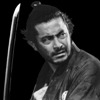




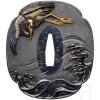





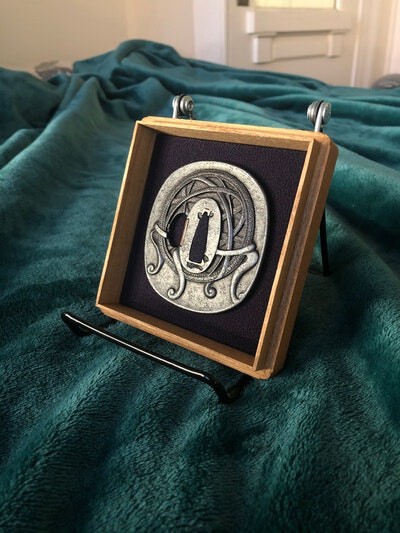
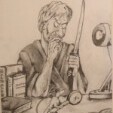


.thumb.jpg.c4c759f5c716a1fdcb7eb8b72ef0c400.jpg)
